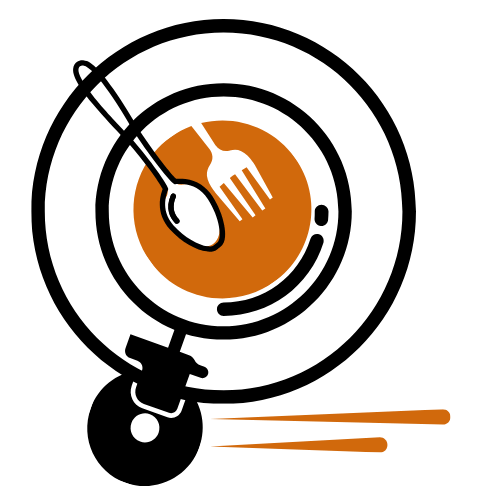Uncategorized
Chebakia sweet or pierced
Halwa chebakia or mukharakah is a flower-shaped sesame biscuit that is fried and then dipped in honey. Fragrant with anise, cinnamon, saffron and orange blossom water, they are a traditional Moroccan favorite during Ramadan and on special occasions.
Chebakia sweet or pierced
The way to make chebakia (also called garyoush or makhraka), is a traditional Moroccan sweet treat during Ramadan and on special occasions. Honey, sesame, cinnamon, saffron, anise, and orange blossom water contribute to the sweet, sticky, flowery flavor.
Chebakia
It is a Moroccan biscuit with sesame coated with honey associated with the month of Ramadan and special occasions.
Also known as gharyoosh or mukharakah, the distinctive shape is made by folding the dough into a flower shape, frying the dough into a shape, and then dipping the biscuits in hot honey flavored with orange flower water.
In Ramadan, when the chebakia is especially popular, many Moroccans enjoy sweet sticky buns alongside a bowl of harira soup during iftar.
They also appear at special events such as weddings or birth ceremonies, and you can find them on sale year-round in bakeries and market stalls.
Is it grouse or chebakia?
My introduction to these cakes was in the name of Chebakia. That’s all I’ve heard for years, or maybe my ears just haven’t heard enough of it to recognize the other terms. I later learned that some Moroccans refer to them as makhorka.
However, for many Moroccans, particularly the older generations or those in regions outside of Casablanca, ghrioche is the correct term while chebakia is an alternative term, which is another fried pastry drizzled with honey.
With the passage of time and also by region, the chebakia seems to have replaced ghariush as the preferred word to refer to the dazzling form. No matter what you call it, it’s a unique and delicious dessert to add to your cooking inventory.
Main components
The best chebakia are the ones that are made at home with high quality ingredients. Roasted hulled sesame seeds, anise seeds, real saffron threads, olive oil, pure orange flower water, and natural honey are all key factors for great flavor and texture. Some recipes also call for the use of ground almonds. Considering the quantity that some families make, the cost of these ingredients can really add up.
The quality of the ingredients is reflected in the prices of the ready-made chebakia. Mukharka purchased from an upscale bakery would be much more expensive than an identical quantity purchased from a market vendor, who might cut costs by omitting the saffron and using artificially scented water, less sesame, and substituting pure honey for sugar syrup.
Making chebakia can take a long time, especially if you are making a large batch traditionally or if you are not familiar with how to fold the dough into a flower shape. For this reason, women may group together to accomplish a lighter task.
For example, many women will get together a week or so before the start of Ramadan to prepare enough chebakia, slaw, and perhaps almonds to last throughout the month of fasting for all of their families. This can equate to a full day in the kitchen, even with three or more sets of hands.
ingredients
- 7 oz. Unhulled sesame seeds – about 1.5 cups
- 4 cups of flour
- 1/2 teaspoon baking powder
- salt 1/2 tsp
- 1/2 teaspoon crushed anise
- 1/2 teaspoon ground cinnamon
- 1/2 teaspoon saffron threads, crumbled into a powder
- 1/2 teaspoon turmeric
- 1 pinch mastic or drops of gum arabic – mix with 1/4 teaspoon sugar and crush into a powder
- 1 large egg
- 1/4 cup unsalted butter – melted
- 1/4 cup of olive oil
- 1/4 cup vinegar
- 1/4 cup orange blossom water
- 1 teaspoon yeast – dissolved in 1/4 cup warm water
For cooking and decorating
- 36 oz. honey – approx.
- 2 tablespoons of orange blossom water
- 6 cups vegetable oil for frying – approx.
- 1/2 cup unpeeled sesame – toasted, for garnish
Chebakia cooking
- Prepare your work area.
- Start by heating 1 inch (2.5 cm) of oil in a large deep skillet over medium-low heat.
- Meanwhile, heat the honey to a boil in a large saucepan. When the honey becomes foamy but not boiling, add the orange flower water
- to the honey and turn off the heat. Set a large bowl with a strainer.
- When the oil is hot, cook the chebakia in batches.
- Adjust the heat as necessary to slowly brown each batch of chebakia until medium brown.
- This should take about 10 minutes if the oil is the right temperature.
- If the oil is too hot, the chebakia will brown quickly but the insides won’t turn out crispy.
- Remove the golden-brown chebakia from the oil with a spoon or strainer, and transfer directly to the hot honey.
- Gently press the chebakia to immerse them in the honey and let them soak for 5 to 7 minutes.
- They will turn a rich, shiny light brown when they absorb the honey.
- Meanwhile, you can start frying another batch of chebakia flowers.
- When the chebakia has finished soaking, remove it from the honey into a sieve or colander, and let it drain for just a few minutes.
- Gently transfer hot to a large plate or tray and sprinkle the center with sesame.
- When you have finished soaking other batches of chebakia in honey, simply strain and add to the plate in a mound, garnishing each batch with sesame.
